As a headphone brand, Phiaton is relatively new to the scene. But as a company, it has a rather long history. Phiaton was setup by Cresyn Korea in 2008 as an initiative to launch its own high end headphone line. Up to that point, Cresyn has been very successful in the headphone OEM/ODM business all over the world, yet not quite known for their own brand of headphone. For a company that has been in the business for over 50 years and currently owns 5 manufacturing plants with 15 thousands employee, one can imagine Cresyn doesn't see Phiaton as a summer project, but rather want it to be a force to reckon with in the headphone business. It is their chance to showoff the company's audio and technological excellency.
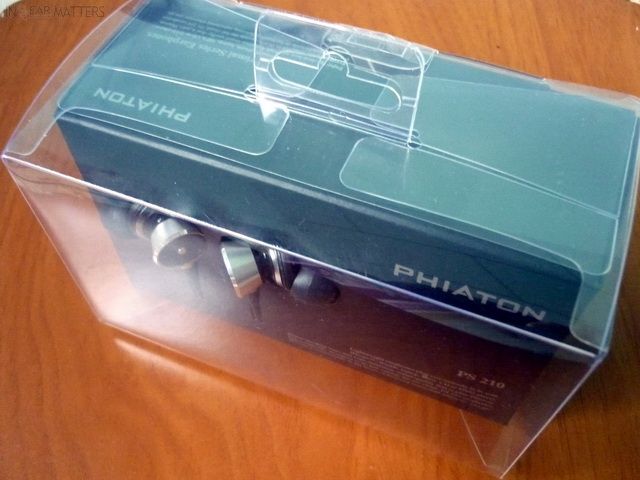
Spec
Driver: Single dynamic transducer
Frequency range: 10 Hz ~ 27,000 Hz
Impedance: 32 Ohm
THD: < 1% @ 1 kHz
Sensitivity: 98dB @ 1 kHz
Maximum input power: 30 mW
Weight: 0.29 oz / 8.2 g without cord
Connector: 3.5mm gold-plated mini jack.
Cable length: 115cm
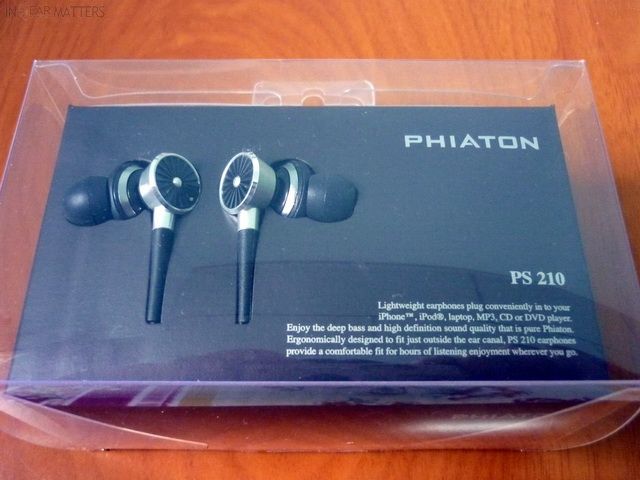
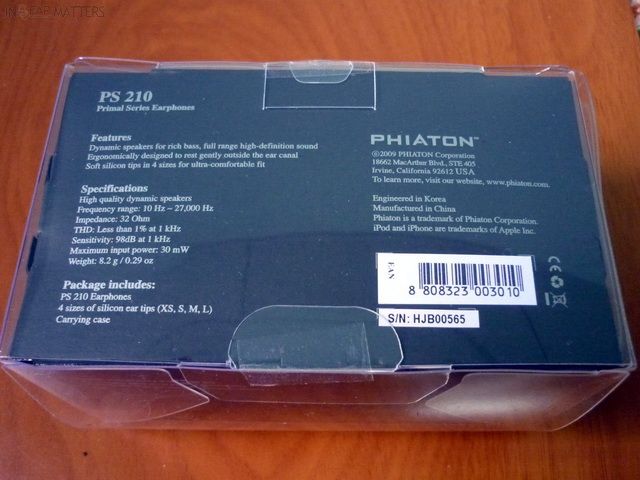
Packaging, Build Quality and Accessories
PS210 comes in a transparent plastic box with quite a small footprint. The earpieces are however, hold inside an inner paper box and showcased in their full glory. Not only the inner paper box is hold firmly by some smart design on the outer plastic box, the whole package also feels like an elaborate origami puzzle with only one place glued while the rest just folded into their own places. It just looks classier than simply blister packed and sealed the whole thing.
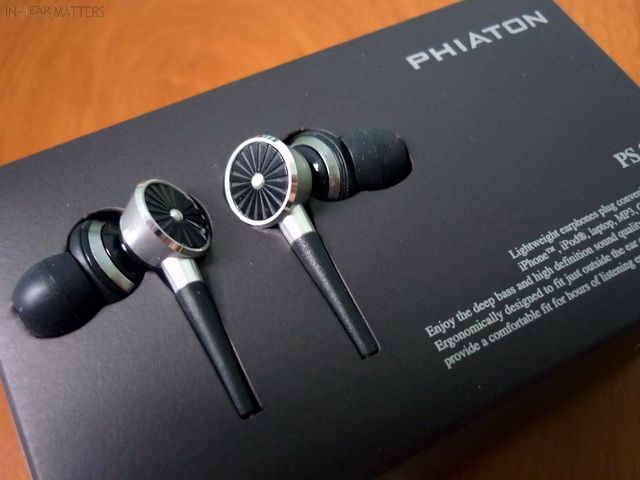
If you read my previous review on several Cresyn IEM models, you will know that there is really nothing to concern about when it comes to the much higher class PS210. The earpeice itself is half aluminum (where the turbine like design is) and half plastic (where the transducer is housed). The strain relief on the earpeice is a little hard but still adequate. The cable is quite tangle- and memory-free while not appears to be too springy or too soft. The Y-splitter is on the small side but the added aluminum cylinder gives it more 'substance'. If there is one place I would like to see improvement, it will be the mini plug. The strain relief and overall build is decent but it is a little too small to handle regularly. I would prefer a longer plastic handle or a L-shaped plug as it will be easier for insertion and removal, not to mention the added durability.
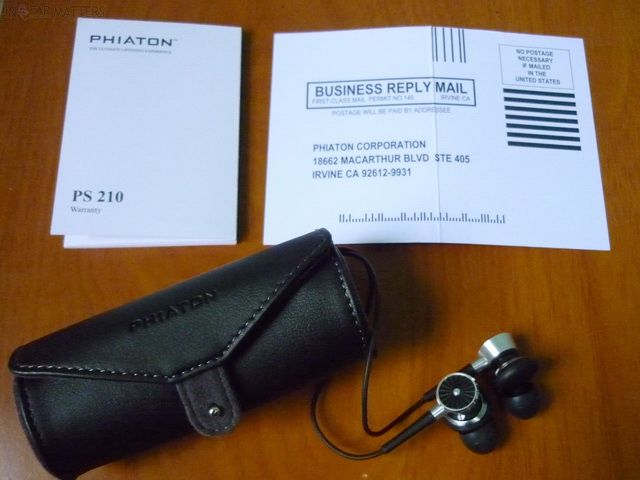
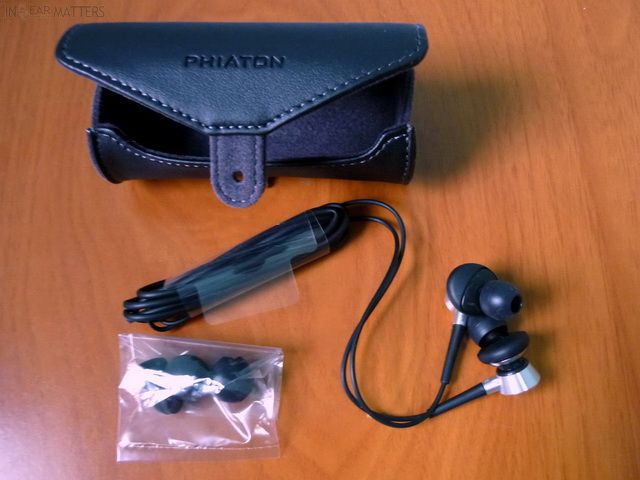
Accessories are average in quantity. There is just 4 pair of different sized single flange eartips (XS, S, M, L) and a carrying case. The eartips are pretty decent, but I do prefer Sony Hybrid (or good quality clone in this case) for better seal and added warm to the sound - and for extra special, I find out that Comply T400 works wonder with both the fit and the sound, but let's keep this discussion to the next section. While the eartips might not be the best there are, the case is however a gorgeous looking leather pouch in cylinder shape. It is great to the touch and houses the IEM perfectly fine. The leather case itself really adds some class to the whole package.
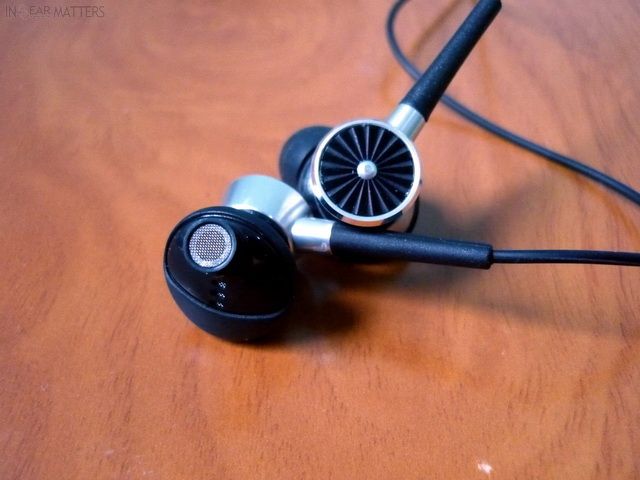
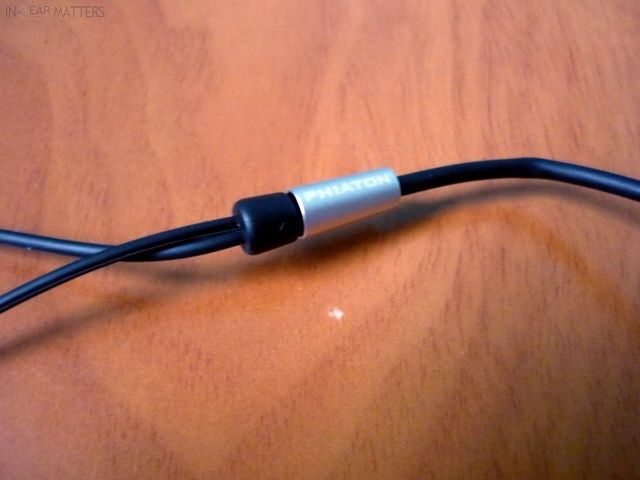
Last but not least - Phiaton calls the PS210 earpieces' design "half in-ear", which is true in both design and actual audio performance sense. Similar design for dynamic transducer based IEM is not uncommon. From the more distanced Sony MDR-EX85 / EX90 to the closer looking Audio-Technica ATH-CKS70, the idea of this design arises from the need to place a relatively large dynamic transducer closer to the ear without actually jamming it in (nor the associated pain of course). The benefit of having a larger transducer is of course based on the simple concept that the extra room provides space for tuning and performance. What unique to PS210 is the openness of the design. As you can see in the picture, there are three small vents near the base of the nozzle (with grill underneath, I might add) - no doubt for sound tuning which we will also discuss in detail on the sound quality section. This feature truly makes the PS210 a "half in-ear" - you get the nozzle of a typical IEM which directs the sound into the ear canal, yet the vents make it performs a lot more like an earbuds. Needless to say, isolation is pretty weak on the PS210. The incomplete seal does make microphonics quite low.
Overall I am quite happy with PS210. Isolation is pretty disappointing but it is a trade off for PS210 unique sound quality. While an improved mini plug won't hurt, I think what I really want to see in the PS210 package is some Comply T400.
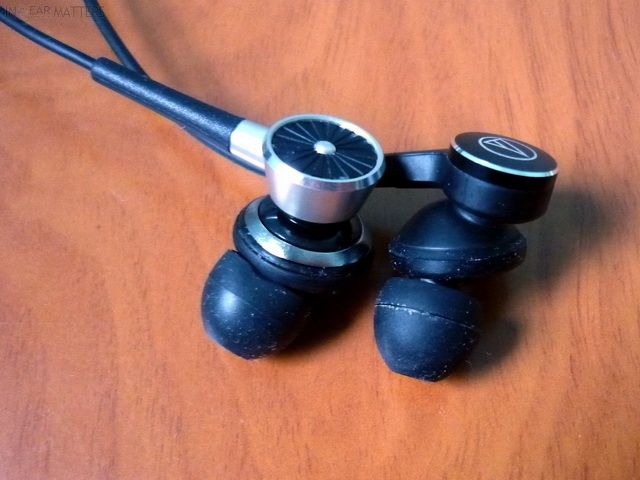
On a side note, PS210 is the winner of this year Red Dot Award. Interestingly enough, CKS70 won it last year. It would have been quite a showdown if Phiaton was able to submit the design last year when PS210 was already out.
Sound Quality
As always, a 50 hours minimum burn-in session on the IEM before review and nothing major was detected. Let's begin with eartips selection - getting the good seal is often half way of getting a good sound. In this case, it is not quite about a good seal. The stock eartips are fine in my opinion, but a little 'lack of substance' as they don't give the kind of sound I like. For those who have listened to a pair of top-end Audio Technica (CM7, CM700) or Bang & Olufsen A8 earbuds before, PS210 will not sound unfamiliar. It is a kind of clean, extremely airy and specious sound with a very crisp treble and relatively lean by most of today standard, a kind of sound signature that has been extremely popular in East Asia and actually been highly thought of over more than a decade in the region. I am not sure whether it is Phiaton's deep Asian root or simply a coincidence, but I must say I am quite pleasantly surprised at the first listen to find that kind of sound signature in an IEM.
Through I have a fair share of love for A8 as an earbuds, I do however like a more balanced sound in my IEM, at least more balanced than the stock eartips can provide. A simple quick fix is the Sony Hybrid eartips (or similar good quality clone), which add more warmth and forwardness to the mid (with a little leftover for the bass) and smooth out some of the graininess on the top end. For a totally relaxing sound however, I prefer the T400. I am not a big Comply user myself (mainly because of the cost), but this really works very well with PS210. It pretty much smooth out all the graininess and mellow out the sound just enough for it to 'disappear in the ear' - which is always a great aspect for any IEM in my opinion. This combination is especially well for classical or instrumental music.
For those who prefer a fuller body mid and bass (i.e. vocal lover), there is a simple mod that can be very effective. Just cut a tiny piece of transparent tape and seal off one of the vents on the base of the nozzle (the first one closest to the nozzle is generally the easiest). I can assure you this will give a rather magical mid and well bodied bass that makes any Jazz singing comes alive. A little Blu-tack will actually give you the same effect, but I rather not recommend it in the long run.
The overall sound signature is analytical, clean, very airy and specious with crisp treble while relatively lean in the mid and bass departments. Treble is well extended and very crisp with slightly graininess on the top yet full of detail. Mid is slightly recessed, but not by much. Bass extends decently low with good speed, but doesn't quite have the impact, body or depth. Soundstage is very wide. To smooth down the graininess and add warmth and forwardness to the mid and bass, Sony Hybrid eartips is recommended. For a relaxing sound, Comply T400 is a good choice. Also, sealing one of the small vents adds the much needed body, depth and texture to the mid and bass.
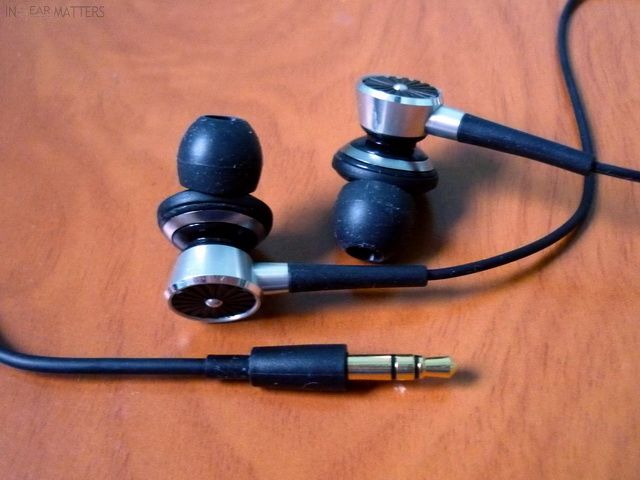
Verdict
There are so many simple ways that PS210 can be tuned to one's liking makes it a rather playful and enjoyable experience for me as both as listener and reviewer. Despite the fact that it doesn't have near enough isolation to actually be used in anywhere noisy, the "half in-ear" half earbuds-like quality of PS210 is what I consider a trade-off, not a total disadvantage from a sound quality point of view. PS210 will be a great choice for analytical listeners that are looking for openness that is not typically found in IEM and do not demand isolation, more so if you are willing to play around a bit. MSRP is $119 but street price can be as low as $95 - it is a no brainer for me.
A quick sum-up can be found here.






